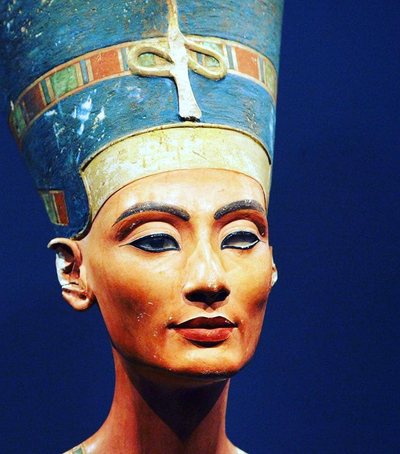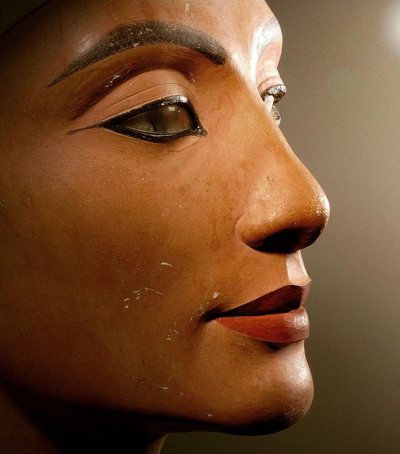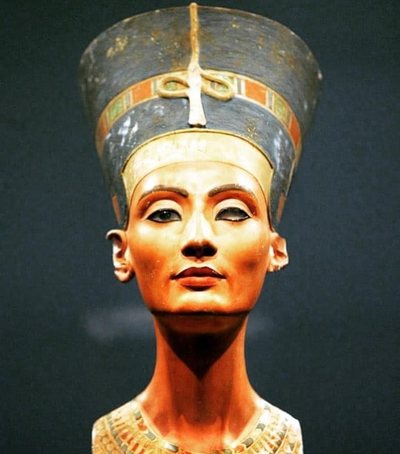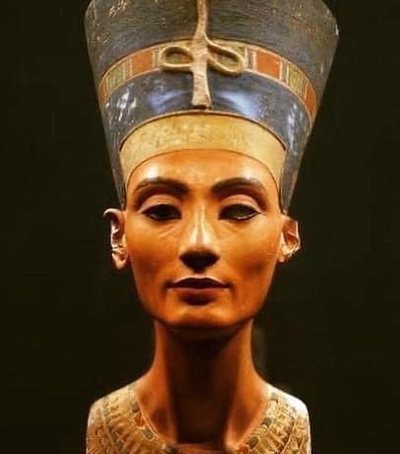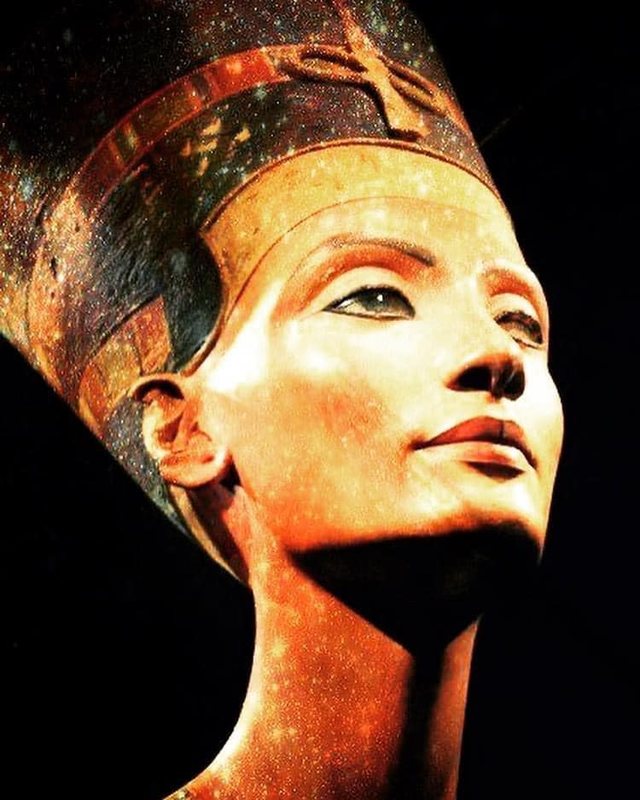
The Venus of Willendorf is all body, Nefertiti all head. A radical surgical intervention has removed her shoulders. Early in its history, Egypt invented the bust, a style of portraiture still in use.
The Ka, who entered and exited through false doors, may have been twice as big and healthy. The shoulders of Nefertiti's bust must have shrunk to become a pedestal. There is no physical strength left.
The queen's body is bound and invisible, like a mummy. Her face radiates the warm glow of rebirth. Tense with self-creation, she is both mother goddess and father god. The pregnancy of the Venus of Willendorf is displaced upward, restructuring her.
Willendorf is the chthonic power of the belly, Nefertiti is the Apollonian magic of the head. Such has thought made her. From the height of her royal dignity, Nefertiti projects herself like a jet plane towards the cult of heaven. A blow forward. The beard opens the way.
Her bust is "kockenadh." She is the stone architecture of Egypt, just as the Venus of Willendorf is the oval of the earth, the woman who trembles like a boiling egg. Nefertiti is the feminine made mathematical, the feminine who is deified by becoming stronger and more concrete.
By Camille Paglia

